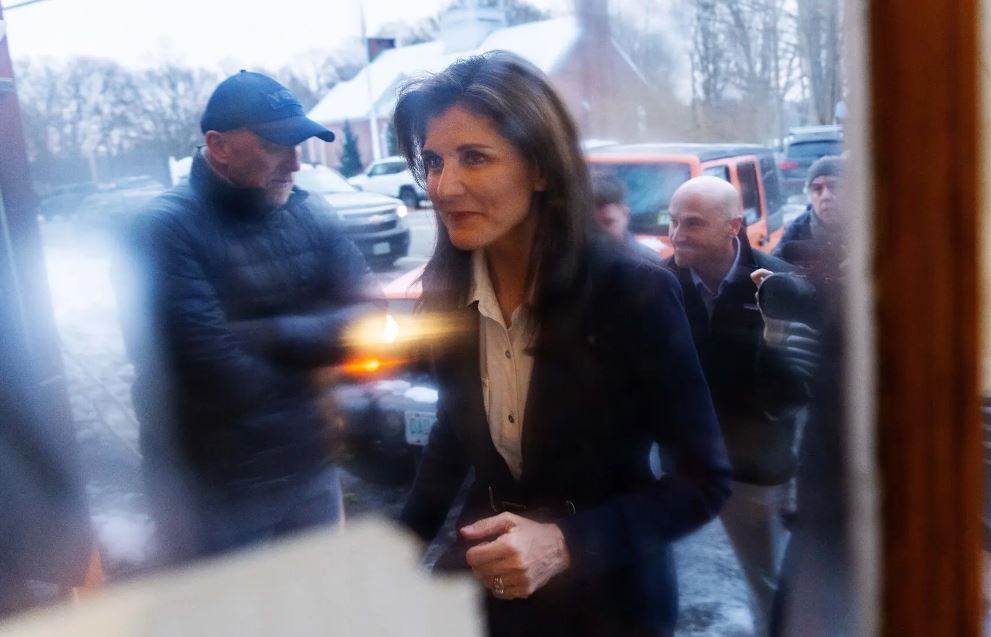In the race for the Republican nomination, Nikki Haley emerges as the sole contender standing between former President Donald J. Trump and the coveted position. Having amassed an impressive $24 million in the final quarter of 2023, Haley enters the new year with a formidable $14.6 million in her campaign account, a financial stronghold that significantly bolsters her insurgent bid for the White House.
The financial disclosures filed with the Federal Election Commission on Wednesday underscore the robust fundraising machinery behind Haley’s campaign. While the numbers do not detail post-January contributions, they illuminate a judicious approach to campaign spending, positioning her as a strategic and resourceful contender.
Haley’s campaign spokesperson, Olivia Perez-Cubas, emphasized their fiscal prudence, stating, “We are running a smart campaign and that means spending our money wisely.
Despite a distant third-place finish in the Iowa caucuses on January 15 and subsequent defeat in the New Hampshire primary eight days later, Haley’s financial resilience has allowed her to maintain momentum. The campaign’s financial discipline becomes evident as it manages to control spending while actively seeking new contributions.
While Haley’s campaign demonstrates financial restraint, the super PAC supporting her, SFA Fund Inc., engaged in substantial advertising expenditures in 2023. The super PAC reported a notable $50.2 million raised in the second half of 2023, bringing the total for the year to $68.9 million. However, with extensive spending, the super PAC concluded the year with approximately $3.5 million on hand.
In a bid to further bolster her candidacy, Haley recently presented her case to some of the nation’s wealthiest donors. Despite being considered a long-shot candidate, her aides express confidence in her ability to secure necessary financial backing.
Haley’s approach to campaign travel distinguishes her from other candidates, exemplifying financial moderation. Until recently, she predominantly traveled via commercial flights, in contrast to rivals like Governor Ron DeSantis of Florida, whose campaign expenditure surpassed $2.5 million on private jets, as per recent records.
Financial records revealed a consistent pattern of fiscal responsibility coupled with a growing base of donor support. The campaign, inclusive of transfers from other committees under Haley’s control, garnered $17.3 million and spent $14.3 million in the last quarter of 2023. While these figures do not encompass the subsequent month, marked by Trump’s victories in Iowa and New Hampshire, they contribute to explaining Haley’s resilience as the last challenger standing.
Throughout 2023, Haley’s campaign demonstrated varying expenditure ratios. In the first quarter, the campaign spent a mere 20 cents for every dollar received. This ratio increased to 68 cents in the second quarter and decreased to 43 cents in the third quarter. Across the entire year, the campaign maintained a spending ratio of less than 60 cents for every dollar received. This places Haley on the lower end among presidential candidates and significantly below the burn rates observed in campaigns like those of DeSantis and Senator Tim Scott of South Carolina.
Haley’s early success in capturing the attention of influential donors has been notable. Venture capital investor Timothy C. Draper, based in California, contributed $2.25 million to her super PAC, while Ukrainian American businessman Jan Koum donated a total of $10 million starting in February. Notably, as her poll numbers surged towards the end of the year, Haley secured substantial contributions from prominent figures such as billionaire hedge fund managers Paul Singer and Kenneth C. Griffin, who each donated $5 million to her super PAC in December.
Nikki Haley’s financial acumen, coupled with her strategic spending and adept fundraising, positions her as a formidable force in the ongoing Republican nomination race, making her a candidate to watch in the months ahead.

